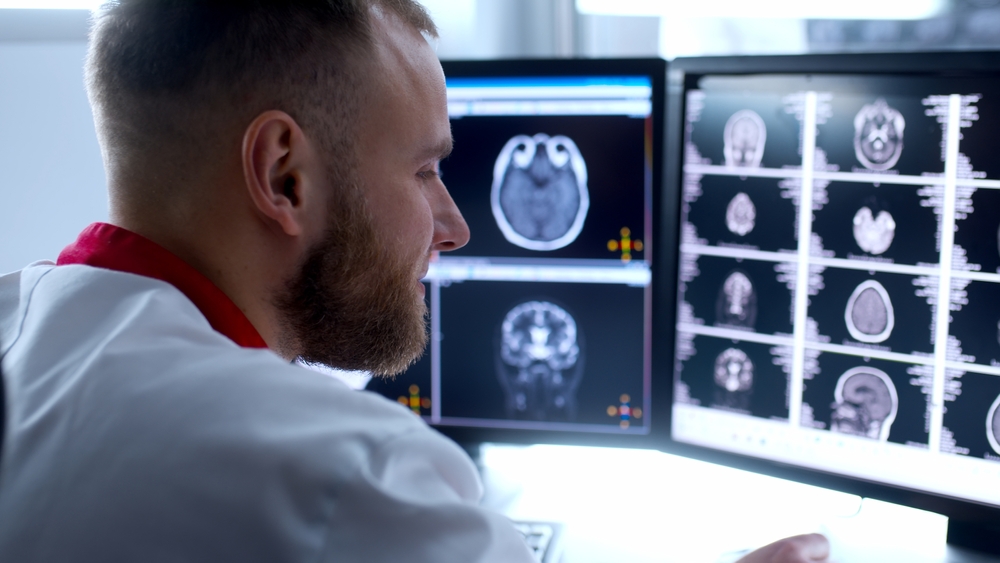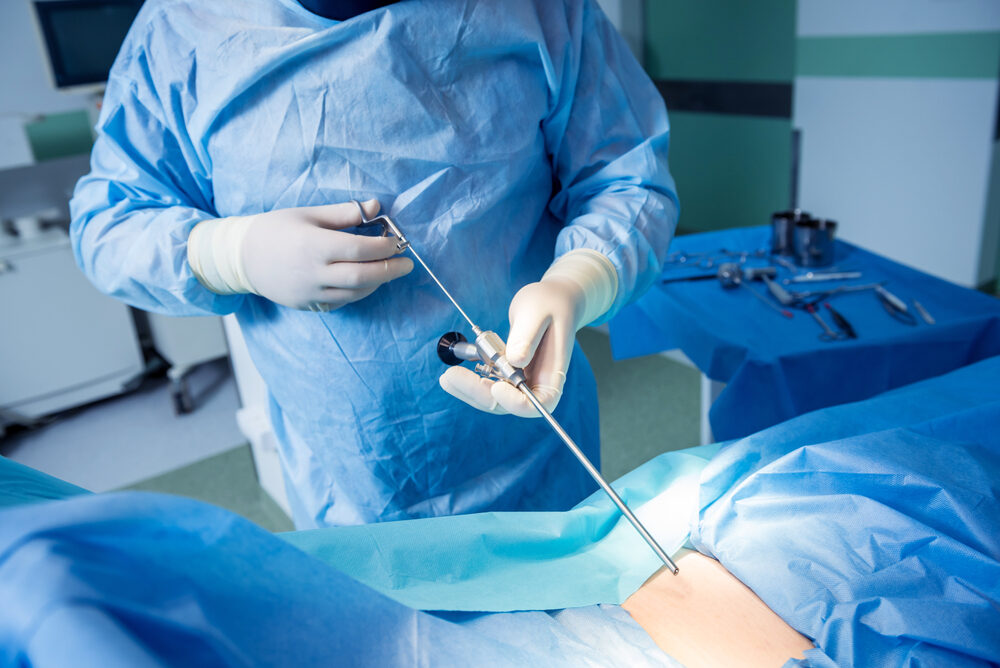
☝️ The most important facts in brief
- A neurosurgeon diagnoses and treats diseases and injuries of the central and peripheral nervous system, including the brain, spinal cord and spine.
- Thanks to major advances in microneurosurgery, minimally invasive operations are now possible in many cases in neurosurgery.
- Neurosurgeons frequently perform operations on craniocerebral injuries, tumours, herniated discs and vascular malformations.
- Rehabilitation after surgery is also an important part of neurosurgery.
📖 Table of contents
A neurosurgeon is a medical specialist who specialises in the diagnosis and treatment of diseases and injuries of the nervous system. Operations for tumours, malformations and craniocerebral injuries belong to this specialist area. To become a neurosurgeon, you must first Study medicine and then complete a six-year training programme to become a specialist in neurosurgery.
Are you interested in studying medicine?
We will be happy to advise you free of charge about your options for studying medicine, including advice on studying medicine in another EU country, which is fully recognised in Germany.
What is a neurosurgeon?
A neurosurgeon is a medical specialist who treats diseases and injuries of the nervous system. Among other things, they carry out operations on the brain, spinal cord and spine.
In addition to tumours and malformations, neurosurgery also deals with the treatment of pain disorders and has become considerably more important in this area in recent years.
Neurosurgery is a demanding speciality that requires extremely precise work and entails a high level of responsibility. As a specialist in neurosurgery, you will work closely with other disciplines such as neurology. This is important both for planning treatment and for subsequent rehabilitation.
Various methods for diagnosing problems of the nervous system
A neurosurgeon carries out various examinations to determine exactly which of a patient's nerves are affected and how they can be treated.
As with preliminary examinations in other medical specialities, the first step is always a medical history and physical examination. Depending on the clinical picture, the methods described below may then be used.
Magnetic resonance imaging (MRI)
MRI is an important diagnostic procedure in neurosurgery. It can produce detailed images of the brain, spinal cord and spinal column. Magnetic resonance imaging is particularly useful for the detection and precise classification of tumours and vascular malformations.
Neurosurgeons use MRI imaging to obtain a precise view of the affected areas of their patients' bodies.
In contrast to X-rays, magnetic resonance imaging is a procedure that can also be used to visualise soft structures such as the brain. In the thoracic, cervical and lumbar spine, for example, not only the bones but also the intervertebral discs and nerves can be visualised.
Electroencephalography (EEG)
An EEG measures the electrical activity of the brain. Electrodes are placed on the head to record the electrical impulses emitted by each nerve.
Among other things, an EEG helps to recognise diseases such as epilepsy. It provides information about the function of the nerve pathways and possible damage.
In general terms, an electroencephalogram therefore enables precise visualisation of brain activity. The procedure is painless and non-invasive.
Examination of cerebrospinal fluid
Cerebrospinal fluid, also known as cerebrospinal fluid, plays an important role in neurosurgery.
During a lumbar puncture, the neurosurgeon removes cerebrospinal fluid from the spinal canal. This fluid surrounds the brain and spinal cord as well as their sheaths.
Subsequent analysis of the cerebrospinal fluid can provide indications of diseases such as infections or inflammation.
Treatment: Different work areas and methods
The profession of neurosurgeon means that the treatment of diseases often involves surgery.
In some cases, however, it is a good idea to consider other treatment options. However, surgery is often unavoidable. We would now like to introduce you to some typical methods of neurosurgery.
Minimally invasive surgery and microsurgery
In many cases, one of the focal points of neurosurgery is precise surgery with minimal tissue damage. The neurosurgeon uses a microscope during the operation to clearly recognise the finest structures such as nerves and blood vessels in the brain or spine and to avoid damaging these structures.
Minimally invasive Surgery not only avoids unnecessary injuries caused by large surgical fields and corresponding incisions. The procedure also significantly reduces pain after the operation and shortens recovery times.
Whether herniated discs, brain tumours or malformations in the nervous system: these procedures have already found their way into many areas in the recent history of neurosurgery and help to make the still stressful treatments as gentle as possible.
Operations on the brain - neurosurgery with an awake patient
For some brain operations, it is necessary for the patient to remain awake during the procedure. This is the only way the neurosurgeon can ensure that important brain functions are preserved.
Surgery without a general anaesthetic is possible because there are no nerves within the brain that could transmit pain. This means that tumours located near the speech or visual centre can be removed. Only a local anaesthetic of the affected sections of the skull is required so that the neurosurgeon can gain pain-free access to the brain.
During the operation, the doctor can use various procedures and communication with the awake patient to test whether he can remove malformations of the tissue at a particular site or whether this would affect nerve systems that the patient urgently needs.
Radiosurgery
A very precise procedure can be used in neurosurgery to treat tumours and malformations in the brain or in another sensitive area of the nervous system. In radiosurgery, the neurosurgeon irradiates the affected areas in a targeted manner and therefore does not have to make any incisions to the head, skull or brain.
Liquor shunt operations
The cerebrospinal fluid system in the brain can be impaired by bottlenecks. In such cases, a neurosurgeon can correct the problem by means of a so-called shunt. If too much cerebrospinal fluid is produced or cannot flow out, it is channelled from the skull into the abdominal cavity via a shunt system. This reduces the pressure on the brain. In this way, neurosurgery prevents the sometimes serious consequences that a permanently increased intracranial pressure would entail.
Intervertebral disc operations
If back pain is caused by compression of the spinal cord due to a displaced disc, the neurosurgeon can perform a relieving operation. However, it is important to weigh up the individual advantages and disadvantages of such an operation when making a diagnosis and planning the operation. In some cases, it is clearly the best solution for the patient, whereas in other cases, treatment without surgery may be more appropriate.

Become a neurosurgeon: These steps are required
Before you can treat spinal cord injuries, brain tumours and other diseases relating to the nervous system as a neurosurgeon, you must complete comprehensive training. This essentially consists of medical studies and subsequent further training to become a specialist.
Medical studies
The medical degree programme lasts 6 years. During the pre-clinical part of the programme, you will mainly learn the general basics. During the clinical part, you will gain an insight into all specialisms and learn the correct procedure for diagnosis and treatment.
There is no specialisation in specific areas during your studies. However, you will definitely gain a good insight into the field of neurology and neurosurgery and can decide after the state examination whether neurosurgery, with its complex tasks, is the right field for you personally.
Specialist training
Following your medical studies, you can work as a junior doctor in a clinic and complete your specialist training as a neurosurgeon. This takes 6 years and includes the following content, among others:
- Basic surgical techniques and detailed techniques in the neck, chest and cranial regions
- Use of imaging techniques to make the right diagnoses
- Neurosurgical emergency and intensive care medicine
- Treatment of pain in short and long-term therapy
- Inflammation and infections of the nerves
- Tumour diseases of the brain, spinal cord and the associated sheaths
- Neurosurgery in children
Career and salary: What does a neurosurgeon earn?
Neurosurgery, a highly specialised and demanding field of medicine, not only requires extensive training and experience, but also offers attractive earning potential. Here is an overview of salary progression on the path to becoming a neurosurgeon and beyond.
During medical school
Students do not receive any remuneration during their medical studies. Tuition fees and living costs have to be financed from their own resources or through part-time jobs. This period can be financially challenging, as the degree programme is intensive and time-consuming, which severely limits the opportunity for gainful employment. In addition, there are often costs for teaching materials and possibly stays abroad.
During specialist training
After studying medicine, the specialist training to become a neurosurgeon takes several years. During this time, the prospective neurosurgeons work as assistant doctors in clinics. The average gross salary of a junior doctor in Germany is between 4,800 and 6,000 euros per month, depending on the clinic and collective agreement. With increasing experience and specialisation, assistant doctors can earn higher salaries.
As a trained specialist in neurosurgery
After completing specialist training, the salary increases significantly. Employed neurosurgeons in clinics or specialised centres earn on average between 8,000 and 12,000 euros per month. This salary can vary depending on the employer, area of responsibility and professional experience. Neurosurgeons who work in management positions can earn even higher salaries, often supplemented by performance bonuses and other incentives.
Self-employment and own practice
Neurosurgeons who become self-employed and open their own practice have the potential to further increase their income. Income can vary greatly here and depends on the number of patients, the type of procedures performed and the efficiency of practice management. However, self-employment also comes with higher risks and responsibilities, such as high initial investments, ongoing operating costs and economic uncertainties.
Comparison and perspective
Compared to other medical specialities, the salary of neurosurgeons is in the upper range. Due to the complexity and high level of requirements of this discipline, salaries are correspondingly high. The demand for specialised neurosurgeons is constantly increasing, especially in specialised clinics and centres for complex surgical procedures.
Free information material
Studying medicine abroad 🎉
Order your info pack now, find out more about the Studying medicine abroad and get started as a medical student!





